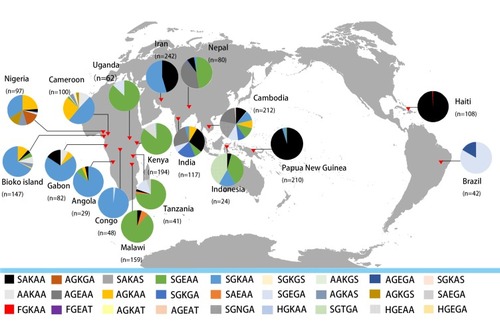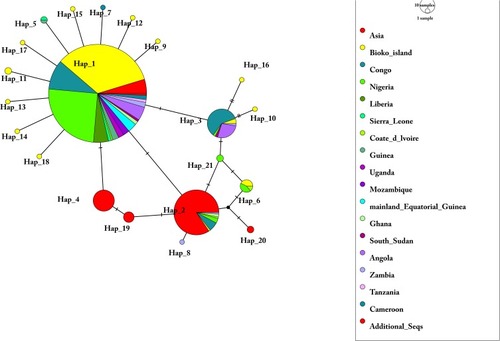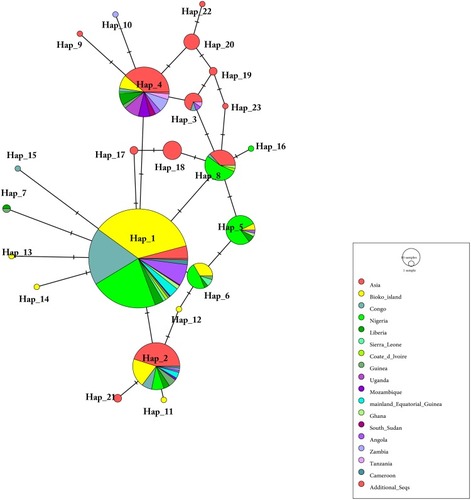Figures & data
Table 1 The Frequency and Variation Trend of SP-Resistance Mutations in Pfdhfr Among Bioko Parasites from 2011 to 2017
Table 2 The Frequency and Variation Trend of SP-Resistance Mutations in Pfdhps Among Bioko Parasites from 2011 to 2017
Figure 1 Geographical distribution of Pfdhfr haplotype mutants from 18 countries and areas. The four capital letters denote amino acids at positions 51, 59, 108, and 164. Different haplotypes are identified by different colours.

Figure 2 Geographical distribution of Pfdhps haplotype mutants from 18 countries and areas. The five capital letters denote amino acids at positions 436, 437, 540, 581, and 613. Different haplotypes are identified by different colours.

Figure 3 Network of Pfdhfr haplotypes for 603 Plasmodium falciparum isolates from 16 African countries and Asia. The network was constructed by using the POPART program with the median-joining algorithm. The size of each pie indicates the proportion of the haplotype frequencies. Different colours in each pie indicate different countries or regions. Additional_Seqs stands for 3D7 isolates.

Figure 4 Network of Pfdhps haplotypes for 589 Plasmodium falciparum isolates from 16 African countries and Asia. The network was constructed by using the POPART program with the median-joining algorithm. The size of each pie indicates the proportion of the haplotype frequencies. Different colours in each pie indicate different countries or regions. Additional_Seqs stands for 3D7 isolates.

